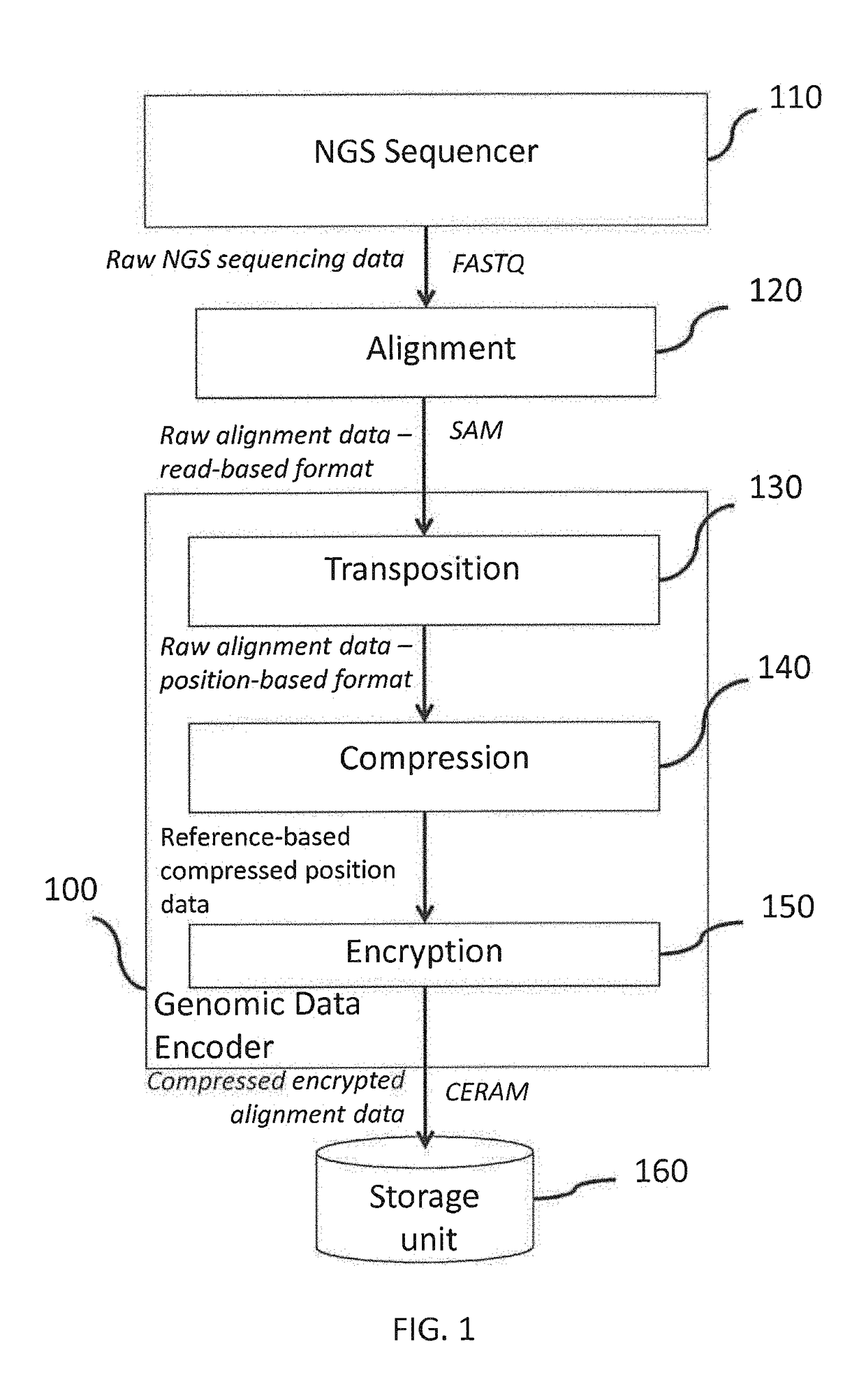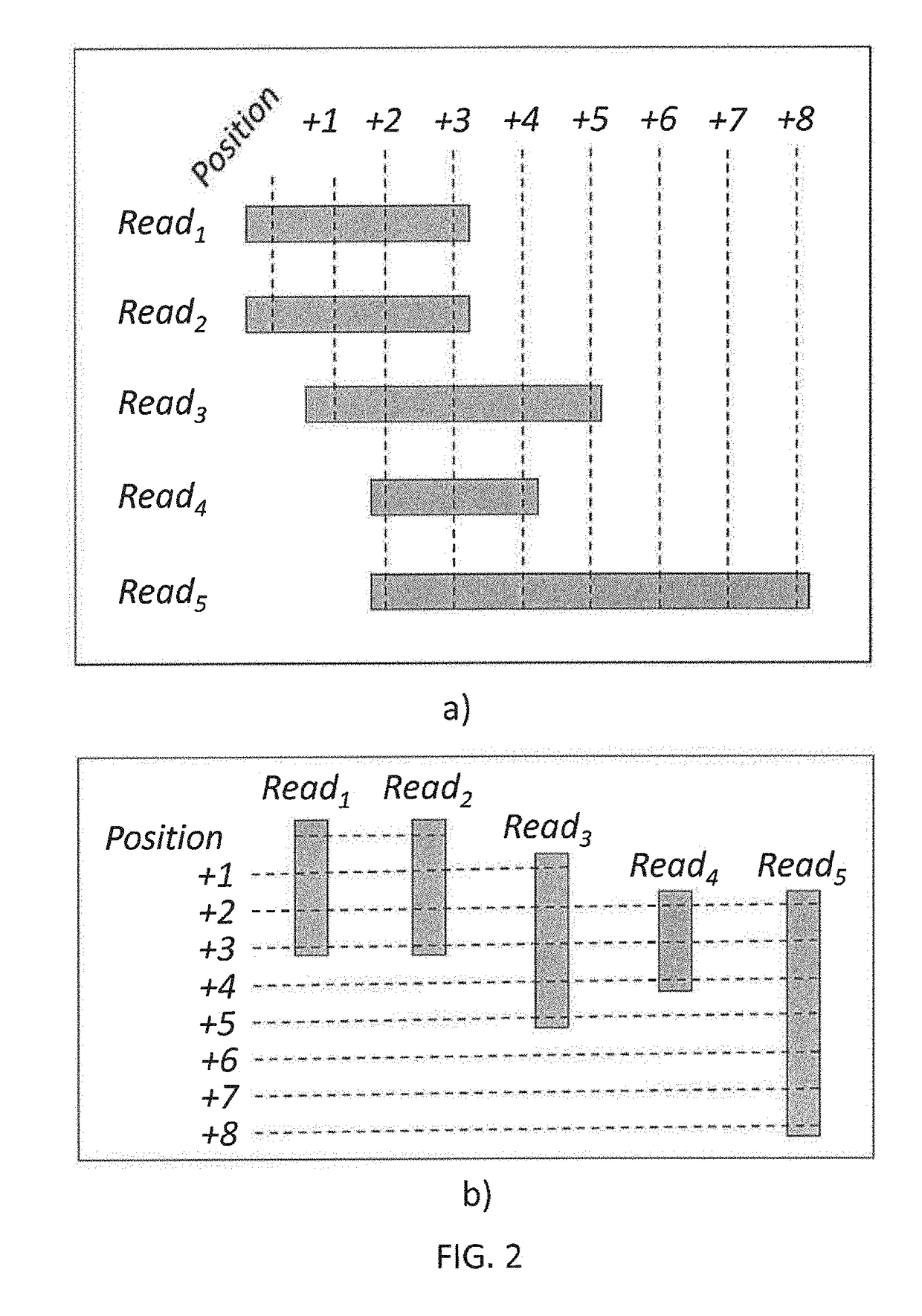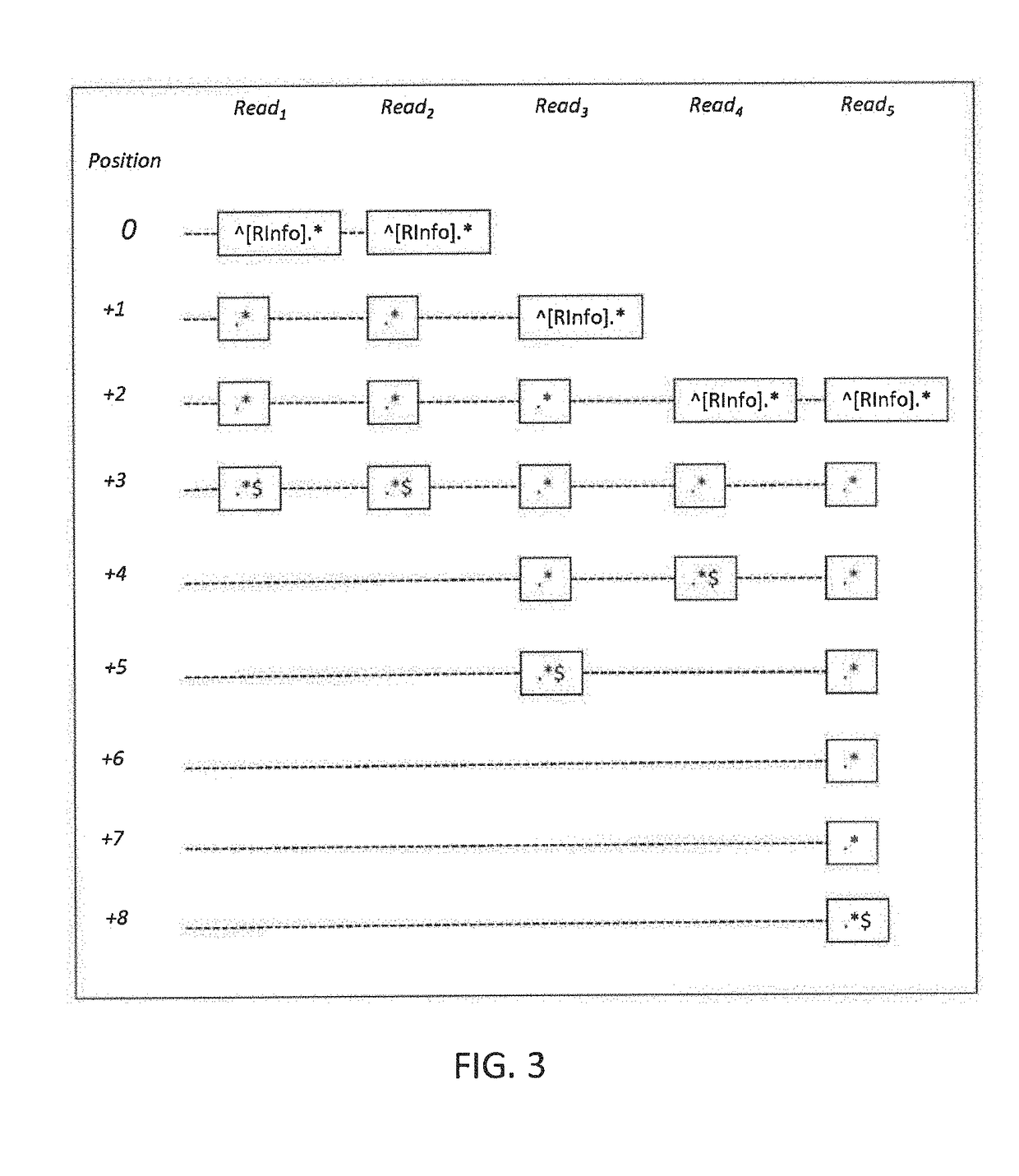Methods to compress, encrypt and retrieve genomic alignment data
a genomic alignment and compression technology, applied in the field of genomic data processing, can solve the problems of denying individual participants access to life insurance or employment, next generation sequencing technology poses new challenges in the compression of genomic data in terms of data size and structure, and inefficient storage and transfer of entirely new genomic sequences
- Summary
- Abstract
- Description
- Claims
- Application Information
AI Technical Summary
Benefits of technology
Problems solved by technology
Method used
Image
Examples
Embodiment Construction
[0032]FIG. 1 shows a genomic data processing system comprising a genomic data encoder 100, a next generation (NGS) sequencer 110 and a biobank storage unit 160. The next generation sequencer 110 may generate, with a processor, raw NGS sequencing data in one or more data files. In a possible embodiment the raw sequencing data file may be in the FASTQ format as known to those skilled in the art of bioinformatics for next generation sequencing technologies. Depending on the NGS technology, one or more files may be output by the NGS sequencer 110. In some embodiments, the FASTQ file format may be used with two different files for forward and reverse reads or as a single joined file. Other embodiments are also possible.
[0033]With a processor, an alignment module 120 may take as input the raw NGS sequencing data, align the short reads to a reference genome, and generate a raw alignment data file. In a possible embodiment the raw alignment data file may be in the SAM fo...
PUM
 Login to View More
Login to View More Abstract
Description
Claims
Application Information
 Login to View More
Login to View More - R&D
- Intellectual Property
- Life Sciences
- Materials
- Tech Scout
- Unparalleled Data Quality
- Higher Quality Content
- 60% Fewer Hallucinations
Browse by: Latest US Patents, China's latest patents, Technical Efficacy Thesaurus, Application Domain, Technology Topic, Popular Technical Reports.
© 2025 PatSnap. All rights reserved.Legal|Privacy policy|Modern Slavery Act Transparency Statement|Sitemap|About US| Contact US: help@patsnap.com



